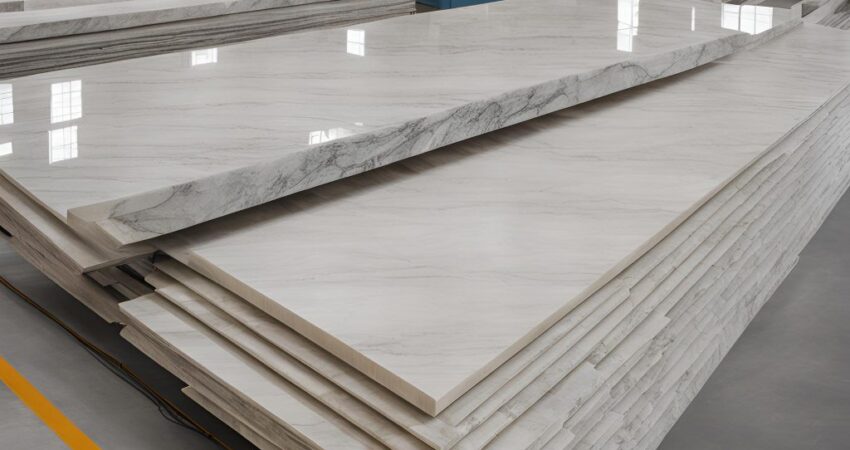The Stone market is full of diverse stones, especially egyptian marble renowned for its elegance and historical significance, has undergone a remarkable transformation in recent years. Technology, once a distant concept in this age-old trade, is now revolutionizing how marble is quarried, processed, and distributed. Advanced quarrying techniques, such as diamond wire saws and water jet cutting machines, have improved precision and efficiency while minimizing waste, aligning with the industry’s focus on sustainability.
Additionally, technological innovations have streamlined processing methods, resulting in higher-quality products that meet the intricate demands of modern design. Digital design tools empower architects and designers to create unique marble applications, pushing creative boundaries. Moreover, online platforms and virtual reality tools enhance distribution and marketing, providing customers in stone market with easier access to a variety of marble options.
As the marble industry embraces these advancements, it preserves its rich heritage while positioning itself for future growth, ensuring that marble remains a sought-after material in construction and design. The integration of technology is paving the way for a more innovative and sustainable future in the stone market.
The Development of Marble Quarrying in Stone Market
Traditionally, marble quarrying was an extremely labor-intensive process that relied heavily on manual labor and rudimentary tools. In the early days of the marble industry, workers would use simple hand tools like chisels, hammers, and wedges to painstakingly extract marble blocks from the earth. Quarrymen would carefully carve grooves or holes into the marble using these tools, then drive wooden wedges into the grooves and soak them with water. As the wood expanded, it would create pressure and eventually split the marble from the larger bedrock.
While this method was effective, it was incredibly time-consuming and physically demanding, often requiring teams of workers to spend days or even weeks extracting just a few marble blocks. The work was not only exhausting but also dangerous, as quarrymen faced constant risks from falling debris, shifting stone, or equipment failure. Additionally, the manual extraction process was prone to significant waste. Without the precision of modern machinery, large portions of the marble could be damaged or lost during extraction, leaving behind cracks, fissures, or unusable pieces of stone.
Another challenge of traditional quarrying was transporting the heavy marble blocks. Workers had to rely on rudimentary transportation methods, such as wooden sleds or carts pulled by animals, to move the extracted marble. This further slowed down the process and limited the size of the blocks that could be transported efficiently.
Despite these difficulties, the artistry and craftsmanship involved in traditional marble quarrying laid the foundation for the marble industry as we know it today. The careful, hands-on approach allowed workers to develop a deep understanding of the stone’s qualities, from its natural veining to its structural integrity. However, with limited tools and technologies, the industry faced numerous limitations in terms of scale, speed, and overall productivity.
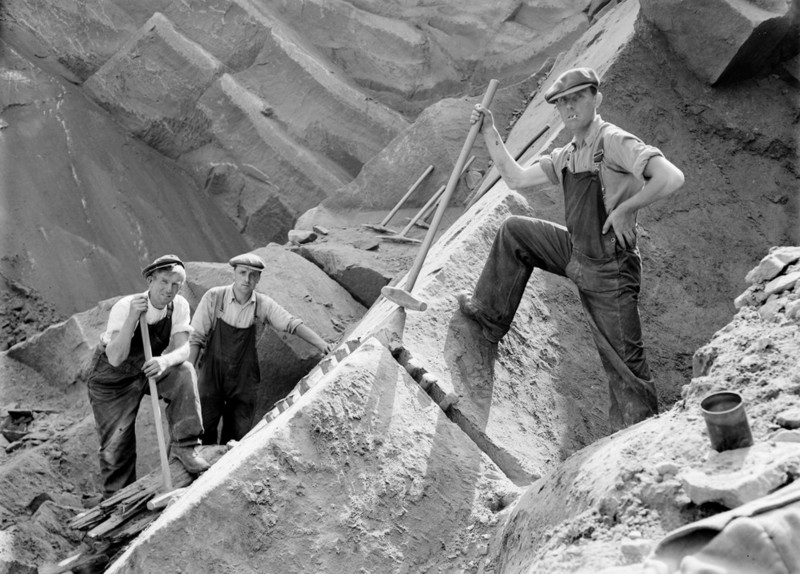
Today, technology has completely transformed the stone market especially in marble industry, revolutionizing the way marble is quarried and processed. One of the most significant advancements has been the introduction of diamond wire saws and water jet cutting machines, which have made the extraction process far more precise, efficient, and sustainable. These advanced tools allow quarry operators to cut through marble with exceptional accuracy, reducing the need for traditional, more invasive methods that often led to significant material loss.
Diamond wire saws, in particular, are designed to slice through marble blocks with minimal friction, resulting in cleaner cuts and less damage to the surrounding stone. Similarly, water jet cutting machines use high-pressure water mixed with abrasive substances to achieve precise cuts without generating excessive heat or causing fractures in the stone. Both technologies have drastically improved the yield of usable marble from each extraction, ensuring that more of the raw material is preserved and less waste is produced.
In the stone market especially marble industry, this technological leap has not only increased operational efficiency but also contributed to more sustainable quarrying practices. By minimizing waste and maximizing the use of available resources, these innovations support the growing demand for eco-friendly materials in construction and design. Additionally, the enhanced precision of these tools allows for more intricate designs and cuts, expanding the creative possibilities for marble in architectural projects. As the stone market continues to embrace these technological advancements, it stands at the forefront of combining tradition with modern efficiency, ensuring that marble remains a valued and sustainable material in the global stone market.
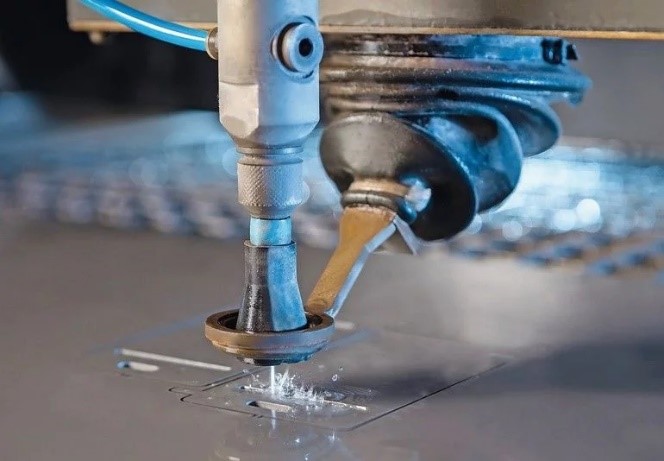
Moreover, the use of drones and 3D mapping technology has significantly improved site analysis in the marble industry, enabling quarry operators to assess and plan extractions with far greater accuracy. These cutting-edge tools provide detailed topographical data, allowing operators to map out quarry sites with precision and identify the best areas for extracting natural marble. By optimizing extraction points, quarrying becomes more efficient, resulting in a higher yield of usable marble and minimizing waste.
This technological advancement also helps to reduce the environmental impact of quarrying operations. With better planning, fewer disruptions to the surrounding landscape occur, and the need for excessive excavation is reduced, making the extraction process more sustainable. The combination of enhanced efficiency and environmental stewardship positions drones and 3D mapping as essential tools in the modern marble industry, helping to meet the growing demand for marble while ensuring responsible resource management and sustainable practices.
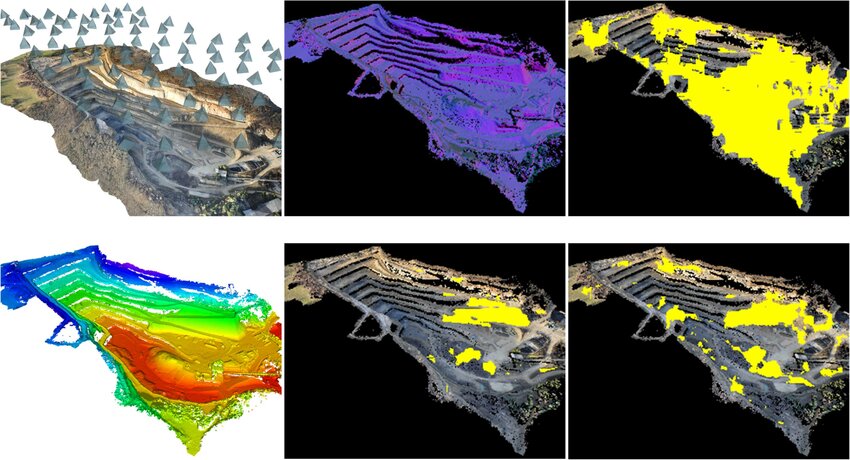
The use of drones and 3D mapping technology
Advanced Processing Techniques
Once marble is extracted from the quarry, it undergoes a series of processing stages to transform it into the polished slabs and tiles used in construction and design then it will be ready to compete in stone market.
In the past, this process involved a combination of manual labor and basic machinery, with each step requiring significant time and effort.
However, modern technology has streamlined marble processing to a great extent. Automated cutting machines, equipped with CNC (Computer Numerical Control) technology, can now cut marble slabs with pinpoint accuracy. These machines are capable of executing complex designs and patterns that would have been nearly impossible to achieve manually.
Additionally, advancements in polishing techniques, such as the use of laser technology, have improved the quality of marble finishes, giving them a superior shine and smoothness so it became the most popular stone in stone market.
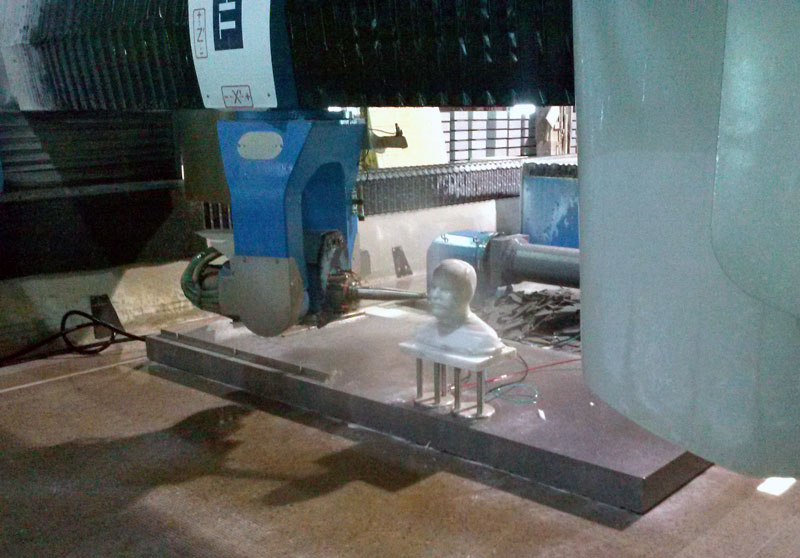
Digital Design and Customization
The integration of digital technology has also revolutionized the design and customization aspects of the marble industry in stone market.
Architects and designers now can use advanced software that allows them to create complicated patterns, textures, and layouts with marble.
Programs like CAD (Computer-Aided Design) enable precise planning and visualization of how marble will be used in a project, ensuring that the final product meets the client’s specifications.
Furthermore, the advent of digital printing technology has expanded the creative possibilities for marble. Designers can now print custom patterns and images directly onto marble surfaces, offering a level of personalization that was previously unimaginable. This technology is particularly popular in the creation of bespoke marble pieces, such as feature walls, countertops, and flooring, where clients seek a unique and tailored look.
Enhancing Sustainability
Sustainability has become a key focus in the modern stone market especially in marble industry, and technology is playing an important role in addressing environmental concerns. One of the most significant advancements in this area is the development of more efficient quarrying and processing methods, which reduce waste and energy consumption.
For instance, the use of water recycling systems in marble processing plants has greatly reduced water usage. These systems collect and purify water used in cutting and polishing, allowing it to be reused multiple times.
Additionally, innovations in stone composite technology have led to the creation of engineered marble, which combines natural marble with other materials to create a product that retains the beauty of natural stone and its quality while being more sustainable.
Improving Logistics and Supply Chain Management in Stone Market
Technology has also had a profound impact on the logistics and supply chain aspects of the marble industry. In the past, transporting marble from quarries to processing plants and finally to end customers was a complex and time-consuming process, often involving multiple intermediaries and extensive paperwork.
Today, digital platforms and automation have streamlined the supply chain, making it more efficient and transparent. For example, GPS tracking systems now allow companies to monitor the movement of marble shipments in real-time, ensuring timely delivery and reducing the risk of loss or damage.
Furthermore, blockchain technology is being explored to enhance transparency in the supply chain, providing customers with detailed information about the origin and journey of the marble they purchase.
The Future of Marble Industry in Stone Market
As technology continues to evolve, the marble industry is poised for even more significant changes which affect on stone market. The integration of artificial intelligence (AI) and machine learning could further enhance the precision of quarrying and processing techniques, while also optimizing production schedules and reducing costs. Moreover, the use of virtual reality (VR) and augmented reality (AR) in design could offer customers immersive experiences, allowing them to visualize how marble will look in their spaces before making a purchase.
Another exciting development in stone market is the potential for 3D printing in the marble industry. While still in its infancy, 3D printing technology could one day enable the creation of complex marble structures and sculptures with unprecedented detail and accuracy.
From quarrying and processing to design and logistics, technology is transforming every aspect of the industry, making it more efficient, sustainable, and innovative. As these trends continue, the possibilities for what can be achieved with stone market are expanding, ensuring that this timeless materials remain at the forefront of architecture and design for years to come.
